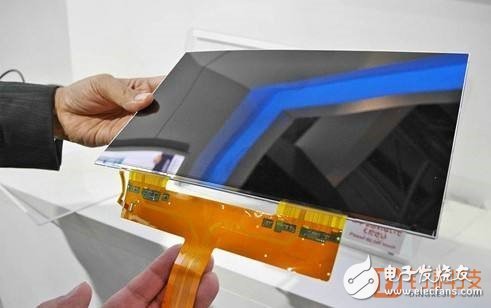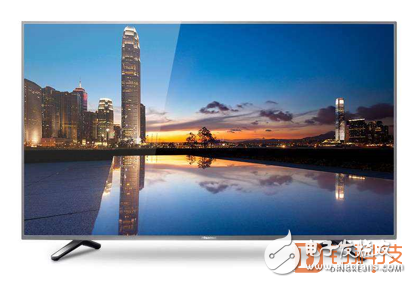In the environment of high panel prices, sluggish new demand, and increasingly fierce market competition, the color TV industry has entered an era of low profit. However, today's color TV industry has got rid of a business model that completely relies on hardware. With the continuous increase in the number of operable users, color TV companies represented by Hisense have increased their efforts to operate large screens. .
Slight hardware profitsIn the first half of last year, due to the continued rise in panel prices, there has been a general decline in the profit margin of Chinese TV manufacturers. According to data from Aowei Cloud, in 2011, the net profit margin of China's color TV industry was still 3%. By 2014, it was only 1.5%, and it fell below 1% in the first half of last year.
The profitability of TV manufacturers has been declining year after year, which is directly related to the meager profit of TV sets. There are three main reasons for the meagre profit of TV sets:
First, panel prices are high. As we all know, the highest proportion of TV raw materials is the panel, which accounts for about 50% -60% of the cost of the whole machine; since 2016, the panel has seen a substantial increase. According to data from Aowei Cloud, from the beginning of 2016 to July 2017, the average increase of the panel was about 40%. Although in the fourth quarter of last year, panel prices have been reduced, but the reduction is not large, at this stage the panel is still at a higher price. According to public statistics, in October 2016, the price of the 55-inch panel rose by US $ 10 and continued to increase for several months; as of October 2017, the price of the 55-inch panel only began to fall, with a decline of only US $ 5, far from normal levels. .

Second, Internet manufacturers compete at low prices. Since the rise of Internet TV stations in 2015, most Internet manufacturers have adopted a price war to seize the market with traditional TV manufacturers. Taking Xiaomi as an example, in January this year, Xiaomi launched a 4A 50-inch TV, featuring high cost performance and intelligent voice interaction, for only 2399 yuan; at the same time, another 4A 32-inch TV under Xiaomi's brand is only 1099 yuan. These two Xiaomi TVs rely on the advantage of low prices, while attracting many consumers, they have also strongly impacted other brands.

Third, fierce competition has resulted in low profit margins. Due to the limited growth in market demand, manufacturers have to carry out promotional activities in order to better promote sales and attract consumers with price advantages. However, excessively lower prices have lowered the net profit of manufacturers. According to data from Aowei Cloud, China's color TV industry net profit fell below 1% in 2017.
Huge operating spaceIn the color TV industry, when the hardware dividend has become a thing of the past, especially when the panel cost hasn't dropped much, content operations have become an important source of profit for manufacturers.
First of all, the number of operable users of the head brand is considerable. According to the latest Internet TV user data released by Hisense, the number of users exceeded 30.78 million in 2017 (25.21 million domestic users and 5.57 million foreign users); at the beginning of last year, Skyworth's Internet TV brand Kukai announced that its Internet activation terminals in mainland China have exceeded 20 million .

Hisense and Skyworth vigorously develop the number of Internet TV operable users, mainly with the help of large-screen Internet, to better promote content operations and increase revenue. According to public information, in 2016 alone, Hisense ’s Internet TV paid VIP membership increased 8-fold year-on-year, and Kukai achieved an operating income of more than 100 million yuan.
Secondly, the operating value of large-screen Internet is accelerating.In terms of content, Internet TV not only makes up for the shortcomings of traditional TV content in the construction of home entertainment scenes, but also integrates entertainment, consumption, and education into it, extending the user's viewing time. According to the "White Paper on OTT Consumer Insight and Business Value Research" released by Dentsu Aegis Group, more than 53% of users run OTT for more than 2 hours per day. In terms of business model, in addition to advertising, membership marketing has also boosted the growth of the TV business. From the perspective of the number of users, OTT is still in the incremental market stage, and there is still much room for development in the future.
According to data from Aowei Cloud, as of the end of 2016, the number of China's OTT terminals (smart TVs and boxes) was 213 million, and it is expected that by 2020 China's OTT large-screen terminals will exceed 400 million. In addition, according to Gozendata data, OTT advertising revenue reached 2.3 billion yuan in 2017, a year-on-year increase of 130%.
From the perspective of supply chain and market competition, the profit of color TV hardware will gradually decrease. Therefore, for color TV companies, they must pay more attention to the construction and improvement of large-screen Internet operation capabilities, while expanding the base of operational users, and exploring reliable Business monetization model.
Linear Array Sensor,Infrared Light Detector Device,Swir Linear Detector,Infrared Ingaas Sensor
Ningbo NaXin Perception Intelligent Technology CO., Ltd. , https://www.nicswir.com